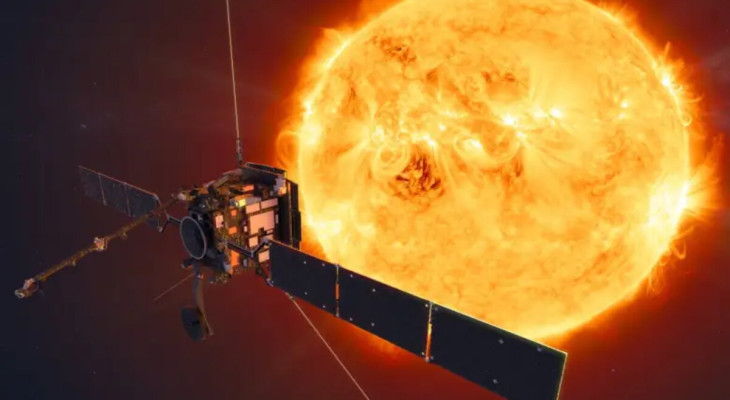Chips are digital diamonds: PM Modi
The Prime Minister Narendra Modi inaugurated the ‘Semicon India – 2025’, aimed at catalysing India’s Semiconductor ecosystem, at Yashobhoomi in…

Aditya L1
Aditya L1 departs from the Earth’s orbit via the slingshot technique. It is the brain of the ISRO scientists that India has turned out to become a Space giant. Despite fuel constraints, the Indian Space Research Organisation has accomplished the past four missions and is on its way to accomplishing the fifth with the help of ‘the Slingshot technique.’ After 17 days of orbiting around the Earth, the aircraft has been pitched out of orbit, 1.5 MIllion Kilometers away from the Earth. The ISRO scientists have ordered to fire the onboard engines of the Aditya-L1 craft in the early hours of Tuesday. This command enabled the Aircraft to gain the trajectory to reach the destination point Lagrangian Point 1.
“The spacecraft is currently traveling toward the Sun-Earth L1 point. After roughly 110 days, it will be maneuvered into an orbit around L1,” the ISRO stated. Considering this, it is noticeable that the Aditya L-1 will become the fifth spacecraft that was slingshotted from the Earth’s orbit to its destination in space. India uses what is referred to as the “slingshot technique” since its rockets lack the lifting capacity to directly supply spacecraft with an appropriate departure velocity and launch them to distant locations. In missions like Chandrayaan-1 (2008), Mangalyaan (2013), Chandrayaan-2 (2019), Chandrayaan-3 (2023), and Aditya-L1, this approach has been effectively used. Technically speaking, such a technique relies on the “Oberth Effect,” which holds that a spacecraft may alter velocity most effectively when it is at the lowest point of its orbit.
The spacecraft Aditya-L1 was sent in an elliptical orbit around the planet. Satellites designed to remain in orbit around the Earth are often put into circular orbits. Therefore, the vessel is always equally far away from Earth. However, when a ship needs to be shifted from one orbit to another or slingshotted on a path toward another celestial body, it is placed in an elliptical or egg-shaped orbit.
The spacecraft’s altitude above the earth’s surface changes continuously in an egg-shaped orbit. Perigee and apogee are the terms used to describe the distance at which a spacecraft approaches the Earth. When a craft is at perigee or its closest approach to Earth, its velocity is highest. For rising orbits, all engine firings take place at perigee. Compared to utilizing a bigger rocket, it uses less fuel and is less expensive. ISRO has demonstrated its capability to carry out such challenging missions to the Moon and Mars, as well as the current mission to study the Sun from a distance, by mastering such difficult calculations and carrying out several orbit-raising maneuvers and injection maneuvers.
Advertisement